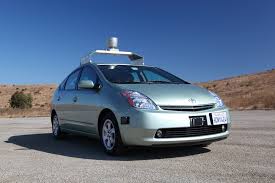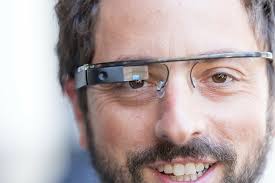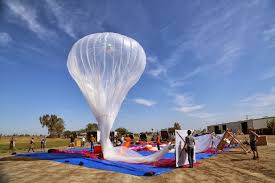Google X
 Google X is the place where most of Google’s more futuristic projects are born and developed. A secretive research facility in California, the lab was opened in 2010 and its main purpose is to create technology that could belong in a sci-fi movie. With less and less money devoted to research in the Western world, Google X hopes to fill the gap, put its budget to good use, and stand where Project Manhattan or Bletchley Park once stood. Its aim is to identify problems and find innovative ways of solving them without thinking of short term gain, and the more a project sounds like something no company would take on in a million years, the better.
Google X is the place where most of Google’s more futuristic projects are born and developed. A secretive research facility in California, the lab was opened in 2010 and its main purpose is to create technology that could belong in a sci-fi movie. With less and less money devoted to research in the Western world, Google X hopes to fill the gap, put its budget to good use, and stand where Project Manhattan or Bletchley Park once stood. Its aim is to identify problems and find innovative ways of solving them without thinking of short term gain, and the more a project sounds like something no company would take on in a million years, the better.
The first project of Google X, and quite likely the main reason the lab came to be what it is today, was the driverless car. The project is tasked with developing autonomous cars and technology that would keep them safe and reliable on the road. Google engineer Sebastian Thrun is running the project, and his team from Stanford created Stanley, a robotic vehicle which won them $2 million from the United States Department of Defence. Thrun is also the co-inventor of Google Street View, the mapping project which uses Google driverless cars to drive around neighbourhoods and take panoramic images which are then accessible online.
 The driverless cars were a great success from the very beginning, and their road tests proved that they can be trusted to drive around crowded roads even in areas where there is no GPS reception, while keeping to the speed limit and respecting the regulation distance between vehicles. They were initially sent on the road with two people on board, a driver who could take control of the vehicle if anything went wrong, and a Google engineer. It’s rumoured that they may soon send the cars out with a single passenger, and eventually the Street View project will include robots who could be taking the pictures instead of the very human Google employees currently tasked with being in a charge of the camera.
The driverless cars were a great success from the very beginning, and their road tests proved that they can be trusted to drive around crowded roads even in areas where there is no GPS reception, while keeping to the speed limit and respecting the regulation distance between vehicles. They were initially sent on the road with two people on board, a driver who could take control of the vehicle if anything went wrong, and a Google engineer. It’s rumoured that they may soon send the cars out with a single passenger, and eventually the Street View project will include robots who could be taking the pictures instead of the very human Google employees currently tasked with being in a charge of the camera.
There were only two reported incidents involving Google driver-less cars since they were set free on the roads. One of them happened while it was actually being driven by an individual near Google campus, and the other bump was registered when a Google car was rear ended while stopped at traffic lights. Autonomous cars are legally allowed on the roads in California, Nevada and Florida, and there’s talk that Texas might be moving to accept the driver-less cars as well in the near future. Google’s plans to commercialise the technology are being slowed down by the laws in many states that do not allow unmanned cars on the roads, although future partnerships with automobile manufacturers are of course not off the table. Rumours inside Google X have said that Google hopes to see many driverless cars on the road five years from now.
 Cars are not the only things on the mind of Google X researchers, and one of the biggest technological advancements of the last year came out of the lab: the Google Glass project. While it’s not available on a mass scale yet, Google Glass has a promising future despite some people mocking its aesthetics. The wearable technology gives users the opportunity to access smartphone features from a device that looks a lot like an ordinary pair of glasses. Google Glass can interact with its user through voice commands, and the process is comparable to the hands-free technology we are already accustomed to.
Cars are not the only things on the mind of Google X researchers, and one of the biggest technological advancements of the last year came out of the lab: the Google Glass project. While it’s not available on a mass scale yet, Google Glass has a promising future despite some people mocking its aesthetics. The wearable technology gives users the opportunity to access smartphone features from a device that looks a lot like an ordinary pair of glasses. Google Glass can interact with its user through voice commands, and the process is comparable to the hands-free technology we are already accustomed to.
Google Glass does not currently have any lenses, a feature that has attracted many snide remarks about its wearers looking ridiculous. However, this will allow for more customisation in the future and there’s talk of Google’s plans to start partnerships with eyewear companies to integrate Google Glass with prescription glasses or even sunglasses. This move would definitely make the technology more accessible and realistic, and would probably make walking down the high-street sporting Google Glass much less awkward than it currently is.
Whilst not an entirely new concept, Google’s take on headwear with augmented reality features has more of a chance to catch on due to its considerably smaller size than previous prototypes. Google Glass is currently available to developers and testers through the Explorer project, and should become available to consumers in 2014 at a relatively low cost. The device has a camera, a touchpad on the side of the frame which allows the user to scroll through the graphic interface, voice control, and even games. Some concerns have been raised about privacy, as Google Glass users could simply walk down the street and record members of the public without prior consent and without being noticed. However, as the technology develops, so will the etiquette surrounding its use with the passing of time.
 Another research project officially undertaken at Google X is Project Loon.
Another research project officially undertaken at Google X is Project Loon.
The aim is to get remote and rural areas connected to the internet, with two main focus points: giving inhabitants of countries without a very developed telecom network a chance to get online, and establishing a quick connection with countries or areas who have dropped off the grid following natural disasters. Project Loon aims to sent high-altitude balloons into the stratosphere to create a wireless network.
It was officially unveiled in June 2013, although some work had already been done as far back as 2011.
Project Loon currently exists as a trial version in New Zealand, where Google launched 30 balloons in June 2013 to test the connection. The next step is to launch about 300 of them around the 40th parallel south to provide network coverage to three more countries: Argentina, Chile and Australia.
Google X has captured the public’s imagination with its open mindedness and ability to take technology out of the films and turn it into something possible. It’s rumoured a secret Google X project is due to be unveiled at the end of 2013, but the details of this launch are closely guarded. After driverless cars and augmented reality glasses, who knows what they’ve got in store for us.
